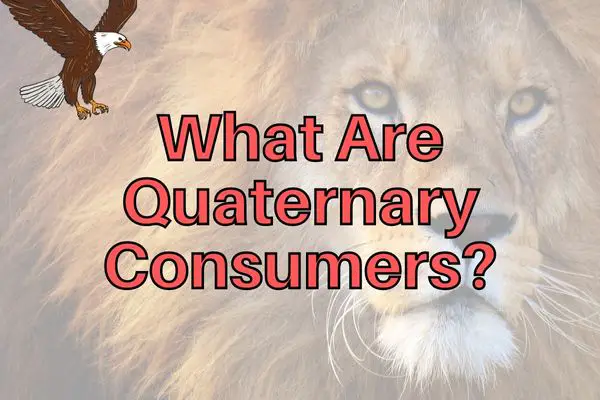The food chain is basically a chain of meals preferred by different animals. The further along you are in the food chain, the more organisms have been eaten along the way.
For example, the grasshopper that eats plants is a primary consumer. The shrew that eats the grasshopper is a secondary consumer. The snake that eats the shrew is a tertiary consumer. The eagle that eats the snake is a quaternary consumer.
Quaternary consumers are apex predators like lions, sharks, and eagles that are found at the fifth trophic level of the food pyramid. They are at the top of the energy pyramid!
The eagle has no natural predators, making it an apex predator. However, for its next meal, the eagle might catch a rabbit. Is it still a quaternary consumer then?
Food webs can get very complicated, and animals can be different consumers at each meal.
Contents
What are the four types of consumers?
The four types of consumers are:
- Primary consumers
- Secondary consumers
- Tertiary consumers
- Quaternary consumers
Primary consumers are animals that eat producers, like plants. Most primary consumers are herbivores, like cows, antelope, seed-eating birds and rodents.
Most insects are also primary consumers, but some, like mosquitoes, can be secondary consumers.
However, sea creatures like small snails and shrimp that feed on other producers, like algae, bacteria or plankton, are also primary consumers.
Omnivores are primary consumers when they eat plants and secondary consumers when they eat other animals.
Secondary consumers are consumers who eat primary consumers. Examples of secondary consumers include insectivorous birds, rodents, and fish, spiders, predatory insects, lizards, frogs, and foxes.
Tertiary consumers eat secondary consumers. These include snakes, fish-eating birds, lizards, some sharks, hawks, sea lions, octopi and squids, birds of prey, polar bears, and orcas.
Quaternary consumers eat tertiary consumers. Examples include birds of prey when they eat snakes or carnivorous birds, polar bears when they eat sea lions, and orcas when they eat seals and sea lions. Orcas are also known to kill sharks for their liver.
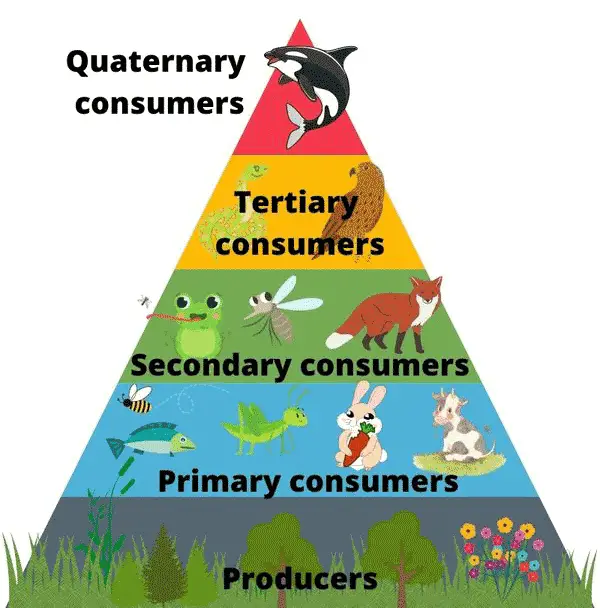
The food chain is often depicted as the pyramid above because energy is lost as we go up the chain. Therefore fewer animals are able to survive and the higher the consumer level, the fewer animals exist.
What are some examples of quaternary consumers?
Many apex predators, like birds of prey, polar bears, and orcas are quaternary consumers. However, there are no exclusive quaternary consumers.
Some of the most numerous quaternary consumers are:
- Eagles
- Polar bears
- Lions
- Tigers
- Alligators
- Crocodiles
- Orcas
- Sharks
- Large predatory whales
All quaternary consumers are also tertiary consumers, but few are also primary consumers.
How are tertiary and quaternary consumers different?
Quaternary consumers are often also tertiary consumers. In fact, there are no exclusive quaternary consumers.
While most quaternary consumers are obligate meat consumers, most are opportunistic predators that will eat tertiary, secondary, or even primary consumers.
For example, if a polar bear eats a fish, it is a tertiary consumer, but if it eats a sea lion, it is a quaternary consumer.
Similarly, if a bird of prey eats an insectivorous rodent, it is a tertiary consumer, but when it eats a snake, it is a quaternary consumer.
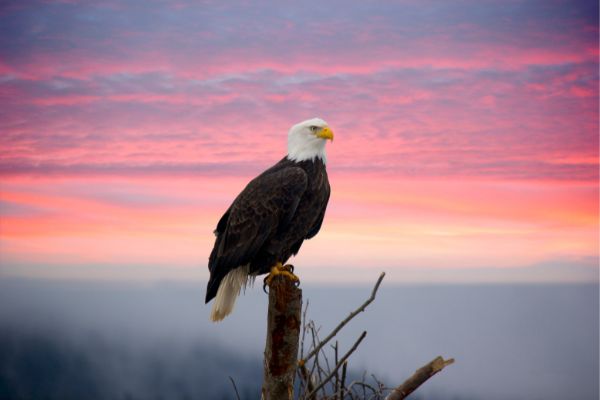
The eagle that eats a rabbit is a secondary consumer because rabbits are primary consumers.
What is the role of quaternary consumers in a food chain?
Quaternary consumers are at the top of the food chain, meaning that they eat other animals, but nobody eats them.
As apex predators, they play an important role in controlling animal numbers, especially weeding out the weak and the sick.
Quaternary consumers play a very important role in evolutionary biology. For example, the faster antelope survive and reproduce, while the slower ones get eaten by predators, meaning that, over time, antelope evolve to run faster.
They are often scavengers of carrion, thereby playing an important role in cleaning up the ecosystem.
Do all ecosystems need quaternary consumers?
Not all ecosystems need quaternary consumers. For example, in a savanna ecosystem, antelope eat the grass, and lions eat the antelope.
This food chain stops at the secondary consumer. The lion is still an apex predator, because there are no predators that routinely feed on lions. But the lion is not typically a quaternary consumer, because the bulk of its diet consists of primary consumers.
Quaternary consumers are rare because there is just not enough food available at the top of the food chain. At each trophic level, energy gets lost1.
When an antelope eats grass, it uses only 10% of the energy from the grass to grow and maintain its body.
The rest of the energy gets lost as heat. Then, when a lion eats an antelope, it again uses only 10% of the energy.
Therefore, it takes 10 times the amount of grass to feed a lion as it does to feed an antelope.
This is why, in any ecosystem, you will always find more primary consumers than secondary consumer, and more secondary consumers than tertiary consumers, with quaternary consumers being even rarer, if present at all.
Another reason why quaternary consumers are rare is that predators often avoid eating other predators.
For example, a study looking at the carcasses of mammalian predators found that scavengers, especially other mammals, tended to avoid predator carcasses, while they were abundant in mammalian herbivore carcasses2.
Similarly, while vultures will feed on mammalian predator carcasses, they avoid carcasses of other vultures3. This is probably to avoid diseases and parasite transmission2.
Are humans quaternary consumers?
Humans can be examples of quaternary consumers in specific circumstance. However, the bulk of most people’s diet consists of plants and primary consumer (herbivores like chicken, beef, lamb, etc) making us mostly primary and secondary consumers.
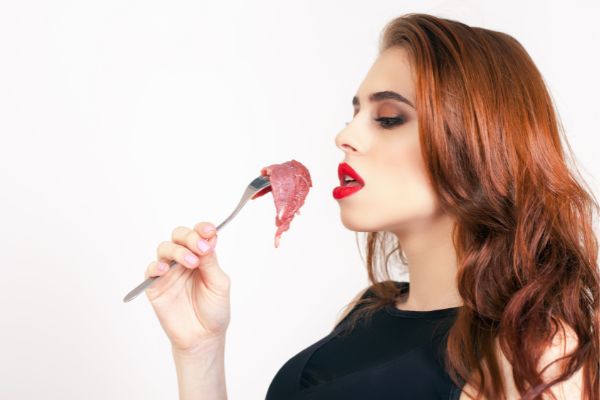
However, they can be quaternary consumers when they eat tuna (a predatory fish) or crab (an opportunistic omnivore that is also known to eat carrion and smaller crabs).
In certain cultures, it is also common for humans to eat sharks4 or crocodiles5. In these cases, humans are also quaternary consumers.
What Eats Tertiary Consumers?
Tertiary consumers are eaten by quaternary consumers. For example, seals are tertiary consumers that eat fish.
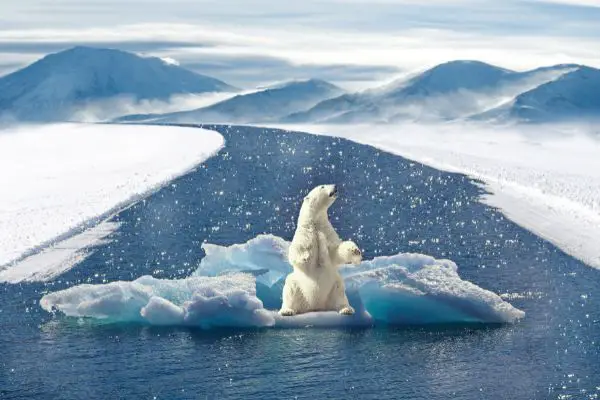
Most fish eat invertebrates, like insects or crustaceans, making them secondary consumers. Seals are a favorite meal of polar bears6.
However, polar bears will also eat fish, berries, seaweed, or any carrion they can find.
Is an eagle a quaternary consumer?
Yes! Eagles are classical examples of quaternary consumers in the food chain.
An eagle is a top predator and primarily feeds on fish, but will also eat small mammals, reptiles, and birds.
A quaternary consumer, such as an eagle, is at the very top of the food chain. Eagles primarily prey on or eat animals that are lower on the food chain than they are, such as tertiary and secondary consumers, but they will also eat other quaternary consumers such as vultures.
In other words, eagles are carnivores that typically eat smaller animals. Some examples of prey that eagles may eat include snakes, rabbits, and rodents.
Are vultures quaternary consumers?
A vulture’s diet consists of carrion or the carcasses of dead animals. Vultures are scavengers, and they often eat the remains of animals that have been killed by other predators.
They can be considered quaternary consumers in some ecosystems where they have few to no enemies and eat just about any other animals – even other quaternary consumers like lions and tigers!
Because they consume such a high volume of carrion, vultures play an important role in keeping ecosystems clean and free of disease.
Is a tiger a quaternary consumer?
Yes, the tiger is a top-level predator, which means it sits at the very top of the food chain as a quaternary consumer. It primarily eats other animals, such as deer, pigs, and buffalo.
These animals are all lower on the food chain than tigers, making them tertiary or secondary consumers.
The tiger’s diet helps to keep the populations of these other animals in check, and its hunting habits help to maintain the balance of nature.
Is Frog a quaternary consumer?
No, a frog may eat other animals, but there are indeed other animals that eat the frog as well! They can be considered tertiary consumers at best, and they often serve as prey for larger carnivorous birds such as herons, storks and cranes.
Conclusion
Quaternary consumers are rare and make up a small, but very important, part in the ecosystem. As apex predators, they have no natural predators.
However, to find enough food, most quaternary consumers need to feed opportunistically as tertiary, secondary, or even primary consumers.
References
- Hickman, C.P., Roberts, L.S., Larson, A., I’Anson, H., Eisenhour, D.J. 2006. Integrated principles of zoology. McGraw Hill. New York, NY. 882 pp.
- Moleón M, Martínez-Carrasco C, Oliver C. Muellerklein OC, Wayne M. Getz WM, Muñoz-Lozano C, José A. Sánchez-Zapata JA. 2017. Carnivore carcasses are avoided by carnivores. Journal of Animal Ecology, 86: 1179–1191. http://doi.org/10.1111/1365-2656.12714
- Bildstein KL, Reeves M, Bobowski MM, Autiliio AR. 2014. Avian scavengers, but not conspecifics, feeding on the carcasses of storm-killed Turkey Vultures on the Falkland Islands. Vulture News, 67: 53-59.
- Vannuccini S. 1999. Shark Utilization, Marketing, and Trade. FAO fisheries technical paper. Food and Agriculture Organization of the United Nations. pp. 66–93.
- Njeru G. 2016. Croc of gold: Kenya’s booming crocodile farm industry. BBC News. https://www.bbc.com/news/business-37218790
- WWF. 2022. Polar bear diet. WWF Arctic program.

